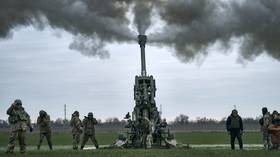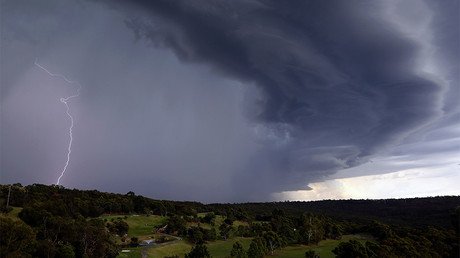Evidence mounts for shale slowdown
There is a growing pile of evidence pointing to a slowdown in the US shale industry, as low prices take their toll.
The rate of hydraulic fracturing began to decline in the last four months of 2018, a sign that US shale activity began to slow even before the plunge in oil prices. According to Rystad Energy, the average number of fracking jobs declined to 44 per day in November 2018, down from an average of between 48 and 50 for the five-month period between April and August 2018.
“After reaching a peak in May/June, fracking activity in the Permian Basin has gradually decelerated throughout the second half of 2018,” Rystad Energy senior analyst Lai Lou said in a statement.
Also on rt.com The US oil industry’s dirty little secret“Looking at preliminary data for November, we see evidence that seasonal activity deceleration has likely started in all major plays except Eagle Ford,” Lou added. “There has been a considerable slowdown in Bakken and Niobrara in November, our analysis shows.” Rystad said that much of the slowdown can be attributed to smaller companies.
The drilling data echoes that of the Dallas Fed, which reported last week that drilling activity began to slow in the Permian in the fourth quarter. Whether measuring by production, employment, business activity, equipment usage rates – a wide variety of data from the shale industry points to an unfolding slowdown.
Moreover, independent data also suggests that a lot of shale drillers are not profitable with oil prices below $50 per barrel. Breakeven prices on the very best wells can run in the $30s or $40s per barrel, but industry-wide all-in costs translate into much higher breakeven thresholds. The rig count has also already plateaued after growing sharply in the first half of 2018.
Also on rt.com 2 big California cities sue Big Oil for climate changeStill, it is a little too early to fully understand what low prices might do to the industry.
That does not mean that shale drillers are down and out. Many analysts are still predicting sizable production growth this year, and very few have yet to significantly downgrade their supply forecasts.
Goldman Sachs lowered its price forecast price for oil this year, but still struck a somewhat optimistic tone in a note on January 6, arguing that the selloff has “overshot current and forward fundamentals.” On the one hand, “spot prices will continue to recover with Brent backwardation set to return by summer as inventories eventually revert to 5-year average levels,” Goldman Sachs analysts wrote. On the other hand, “long-dated WTI deferred prices will gradually decline to $50/bbl as low-cost US production becomes unconstrained and producers resume hedging.”
In the long-term, Goldman says that US shale will keep the marginal cost of supply at roughly $50 per barrel.
The investment bank says that the stocks of US shale companies are oversold, but that investors are still wary. “We have begun to see consolidation, though arguably in shale more is needed,” Goldman analysts wrote in a separate report.
There is a several-month lag between major price movements and dramatic changes in drilling activity and rig counts. The market downturn only began in late October, and we are only now seeing the early signs of an impact from the oil field. Gloomier data could be forthcoming as the data gathering catches up with the reality on the ground. That could potentially mean a drop in the rig count, plateauing production, or other signs of trouble in the months ahead.
The flip side is that oil prices are already trending back up. WTI is hovering at the $50-per-barrel threshold, up more than 15 percent from the December low. The shale industry could hit a rough patch in the first half of 2019, but there is also a chance that things steadily improve as the year wears on.
This article was originally published on Oilprice.com















